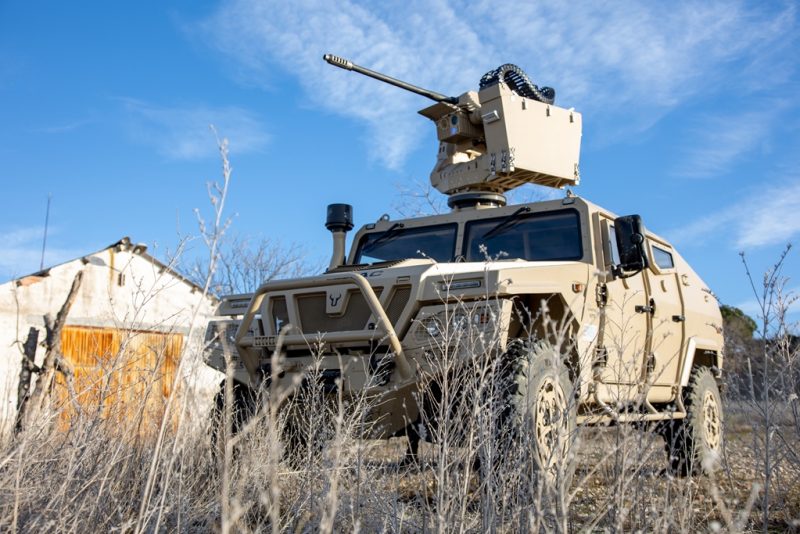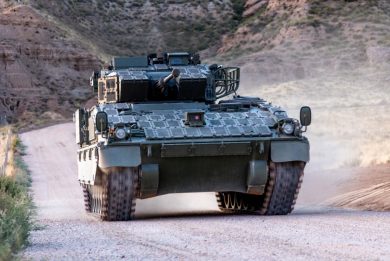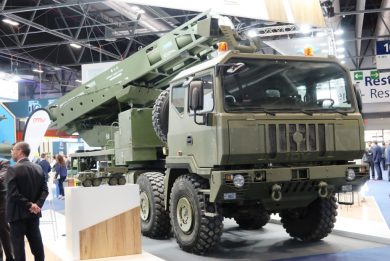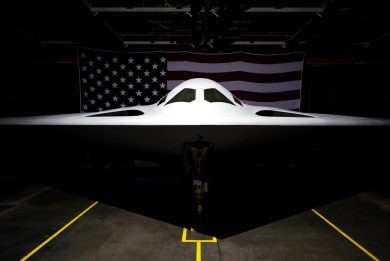Escribano details its Guardian L-HIT RCWS
By Paolo Valpolini
In December 2020 Escribano Mechanical & Engineering announced the launch of a new remotely controlled weapon station of the Guardian family, armed with Northrop Grumman’s M230LF cannon. The Spanish family-owned company specialised in design and manufacturing of complex defence systems is aiming at increasing its footprint on the RCWS market, hence the development of the new Guardian L-HIT, the acronym standing for Lightweight High Impact Turret: “we defined it High Impact as the 30 mm cannon allows to increase the effective range up to 3 km and to provide a lethal effect against light armoured vehicles and other targets which considerably exceeds that of the weapons we can install on the Guardian 2.0,m the 12.7 mm heavy machine gun or the 40 mm automatic grenade launcher,” José Carlos Hidalgo, Escribano’s programme manager for the Guardian programme and responsible for software engineering tells EDR On-Line.
The Guardian L-HIT is heavily based on the Guardian 2.0, which allowed Escribano to considerably reduce the development time, the work on the new RCWS having started around one year ago, while firing trials started in summer 2020. The decision was based on the assumption that an RCWS of this calibre features a much more open architecture compared to a conventional turret, albeit remotely controlled, as it allows to easily adapt it to the customer requirements. To further reduce the logistic footprint as well as training issues the new member of the Guardian family uses the same command console of the 2.0, except of course for the partially redesigned software.
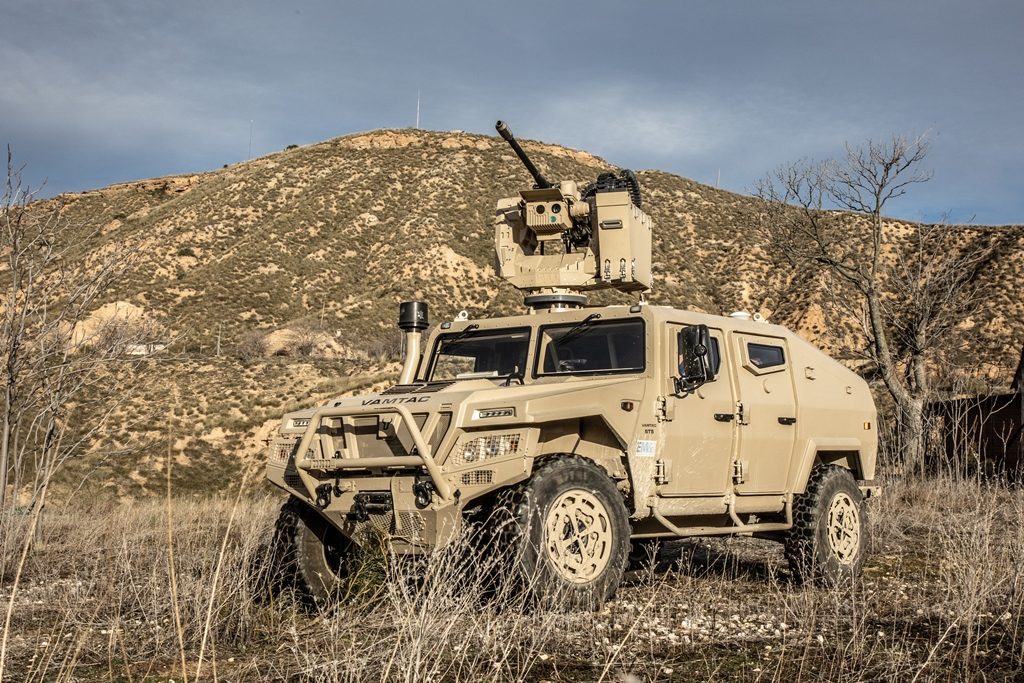
The overall architecture is identical to that of the 2.0, with the ammunition box on the left side, the elevation actuators on the right, the weapon in the centre with underneath the optronic package. The latter hosts three subsystems, a thermal camera, a CCD camera and a laser rangefinder. Depending on customers’ needs Escribano proposes a high-end solution fitted with a cooled MWIR camera defined as EOS-M, or an uncooled solution with the EOS-U. The EOS-M allows exploiting the full effective range of the M230LF, 3 km, the Identification range being in excess of 3.6 km, recognition being at 5.4 km and detection at over 17 km. The camera is based on a 640×512 Indium antimonide matrix 3rd generation detector with a 15 pitch and is fitted with a x8 zoom lens providing a field of view from 2.2° to 17.6°. The uncooled solution provides a shorter identification range, 2 km, with recognition at 2.9 km and detection at over 8.5 km; two different LWIR microbolometers are proposed, both with a 17 µm pitch, a VGA 1024 x 768 pixels with a Narrow FoV of 4° and a Wide FoV of 12°, and a 640×480 pixels array, with NFoV/WFoV of 6.4°/19.2°. With the exception of the sensor matrix, these thermal cameras are produced by Escribano itself. However EDR On-Line understood that the company based in Alcalá de Henares, near Madrid, is about to start production of IR detectors in order to control the whole thermal camera production process. The day channel features a high definition CCD sensor and is equipped with a x20 continuous zoom, which provides a FoV between 1.8° and 36°, giving a detection range of over 15 km, a reconnaissance range of more than 10 km and an identification range in excess of 8 km, the latter distance being the range of the eyesafe laser rangefinder that operates on the 1.54 µm frequency, Escribano proposing as option a laser pointer. The day channel as well as the LRF and the eventual pointer come from third parties, but are all European products, in order to avoid ITAR limitations; that said, the cannon itself is of US origin, but if needed Escribano might well develop a cradle to incorporate a non-ITAR weapon in the same, some options being available on the market.
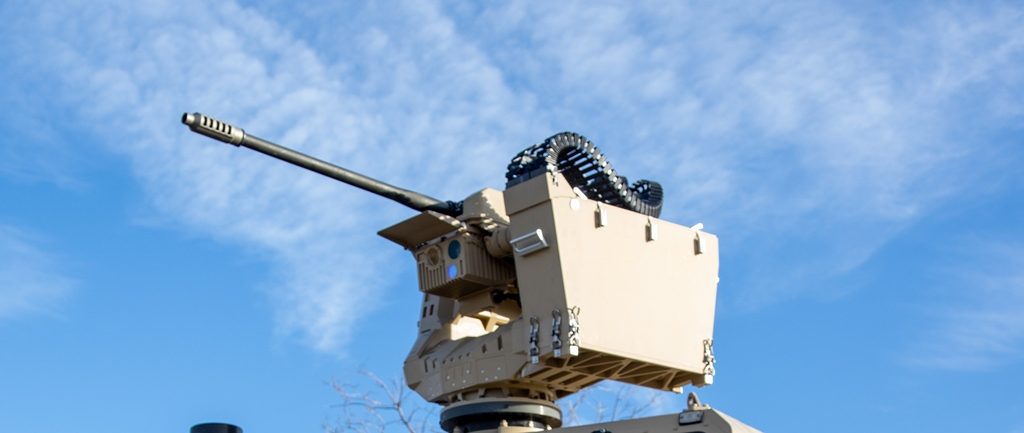
As said, the optronic package is installed under the cannon; Escribano chose to maintain a direct sighting, hence the optics will always be pointed in the direction of the target, with the reticle on it while it is the cannon which is slewed to cope with correction data provided by the ballistic computer, the independent pan and tilt platform allowing a ±11° freedom in elevation and ±10° in azimuth.
Coming to the RCWS structure, “the operational weight of the Guardian 2.0 and of the L-HIT are comparable,” explains Hidalgo. In fact the 2.0 at full load, with the heaviest weapon, ammo load and protection, reaches 300 kg, while the new member of the family should be slightly in excess of 400 kg, considering that without weapon and ammo it is under 260 kg, to which we must add 60 kg of the cannon and around 100 kg of the 200 rounds which constitute the ammunition load, the same amount of rounds of the 12.7 mm machine gun mounted on the Guardian 2.0. “This allowed us to avoid changing the actuators,” Hidalgo adds, which considerably simplified the development. “We concentrated on the cradle design, which is the main different item, although some modification had to be made to the RCWS itself, due to the heavier ammunition load,” the Guardian programme manager tells EDR On-Line. Considering the weight difference between the two ammunition, the load on the left side of the turret should be some 70 kg more than in the 2.0; to compensate this part of the electronics, such as the stabilisation control unit, migrated from the left to the right together with some mechanical elements, in order to bring back the centre of gravity close to the vertical rotation axis of the RCWS. As for the recoil force, “we simulated it first with our digital design tools, then checked it in different steps with firings first on the naked structure and then on the complete mount, but the damping system adopted on the M230LF does not make this a critical issue, compared to the M2 Browning where no impulse reduction systems are available,” Hidalgo explains. The Line of Sight stabilisation is under 0.5 mrad, the overall stabilisation error of the system being under 1 mrad for Line of Fire and less than 0.5 mrad for Line of Sight. The elevation arc is between –20° and +60°, the same of the Guardian 2.0; angular speeds are 60°/s in azimuth and 50°/s in elevation, while respective accelerations are of 80/s2 and 70°/s2.
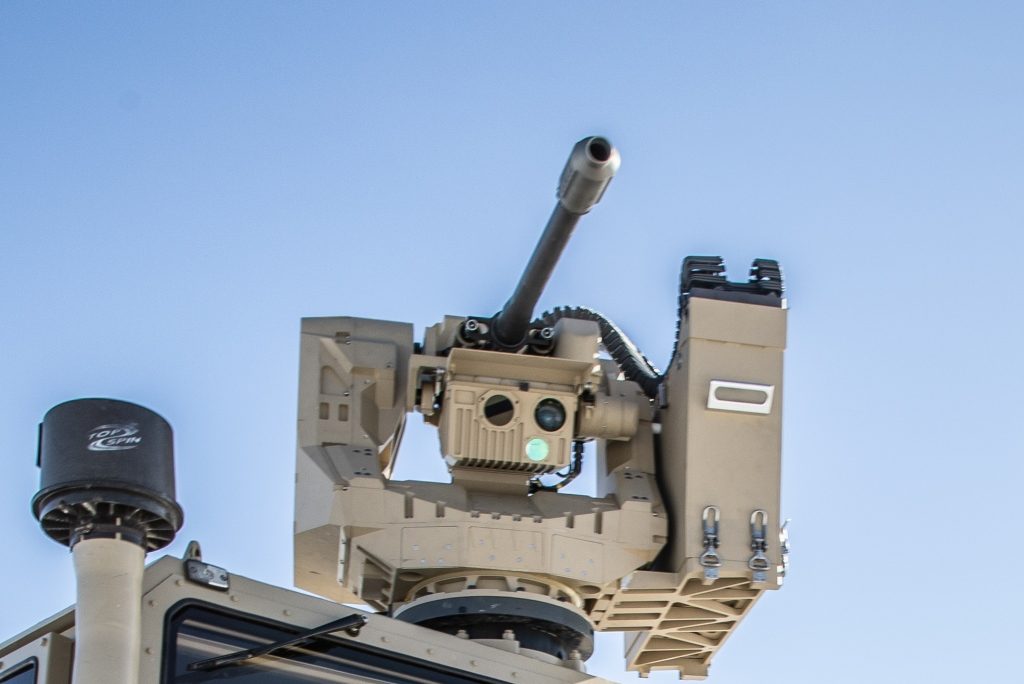
The command console is developed by the company itself and includes company-provided screens and joysticks, the main third-party element being the central processing unit. The control station inside the vehicle is, as said, the same of the Guardian 2.0, and weighs 30 kg. The Guardian L-HIT is fitted with a multi-tracking system that allows following different targets, the operator being able to change the selected target simply touching another target on the touch-screen. Critical controls are usually available on the joystick, however for redundancy they are replicated on the screen. The software was developed in fully accordance with NATO Generic Vehicle Architecture (NVGA) standards. The main difference in the fire control system is that, considering the greater range, the RCWS has been fitted with sensors providing humidity, wind speed and temperature data, not available on the Guardian 2.0, which are considered by the ballistic computer when providing azimuth and elevation data. The RCWS is provided with embedded simulation, which allows operators training in barracks, injecting different scenarios. The simulation system measures the operator’s skills, and provides a score at the end of the exercise, which helps the instructor in evaluating the soldier.
Although designed for the M230LF cannon, the Guardian L-HIT can be fitted with a 12.7 mm machine gun or a 40 mm automatic grenade launcher, adapters also allowing installing lighter weapons such as the MG3 in 7.62 mm calibre, the MG4 in 5.56 mm or the Dillon M134D 7.62 mm Gatling gun. The new RCWS can also be fitted with 40, 76 or 80 mm smoke grenade launchers. The Guardian L-HIT is ready for production, Escribano Mechanical & Engineering proposing its new product on the national market, both to the Spanish Army and to the Naval Infantry, as well as on the international one.
All photos courtesy Escribano

